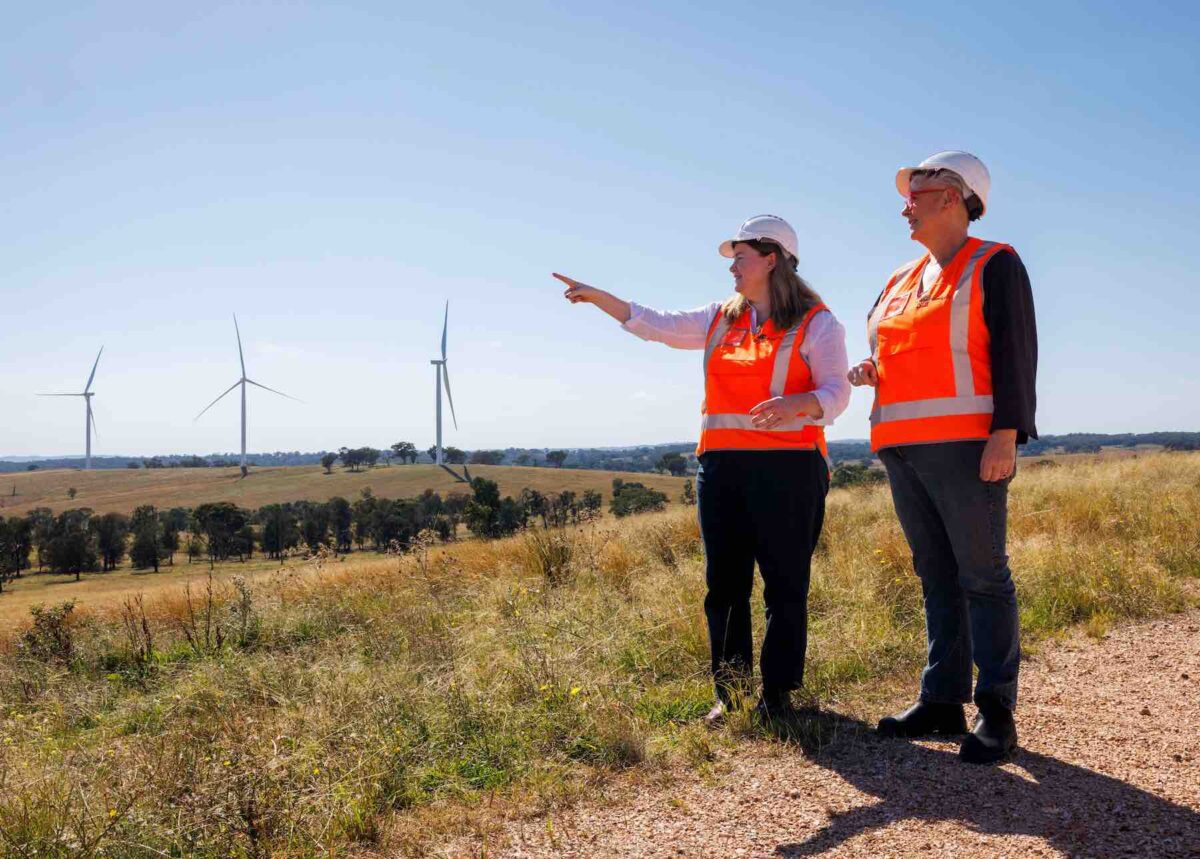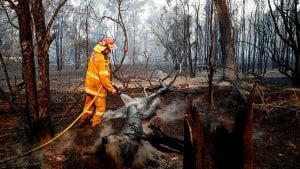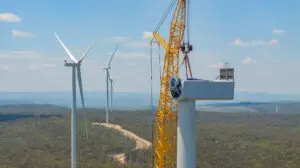Ten renewable energy and storage projects totaling more than 7 gigawatts of capacity have been given the green light to connect to the newly created Central-West Orana Renewable Energy Zone (REZ) in New South Wales after a landmark auction designed to help replace the state’s retiring coal assets.
The projects have been given “access rights” to the coveted renewables zone, and the winners comprise three standalone wind farms, three solar projects with co-located battery facilities, and one hybrid solar and battery project.
The winners include Australian iron ore billionaire Andrew Forrest’s Squadron Energy and another Australian group Tilt Renewables, along with the Philippine based Acen Renewables, the British-based Lightsource bp, and the German-controlled Pacific Partnerships.
But perhaps the happiest winner of all will be federal energy and climate minister Chris Bowen, who sees the three projects located within the CWO REZ that won underwriting agreements in the first round of his Capacity Investment Scheme announced last December all granted grid access.
These are the biggest project in the CIS tender, Acen’s 919 MW Valley of the Winds project, Squadron’s 700 MW Spicers Creek wind project, and Lightsource bp’s Sandy Creek 700 MW solar farm that will be built with a 700 MW and minimum 1,400 MWh battery project.
The other winners in the state’s grid access tender include Acen’s Birriwa solar (600 MW) and battery (600 MW and 1,200 MWh), and Tilt’s recently approved 1.35 GW Liverpool Range wind project (which will also be the biggest in the state for a while).
There is also Potentia’s 500 MW solar hybrid project – which will combine a 500 MW solar facility and a 500 MW, 1000 MWh battery at the same connection point (the largest of its type so far in the country), and Pacific Partnerships Cobbora solar and battery (400 MW of solar, plus 400 MW and 1,600 MWh of battery storage).

The sheer scale of the individual projects, and the combined 7.15 gigawatts of capacity and 5.2 gigawatt hours of storage, was a point underlined by state climate and energy minister Penny Sharpe.
“This deal will secure billions of dollars of private investment in renewable energy and deliver enough electricity to power 2.7 million NSW homes a year,” Sharpe said in a statement.
“By unlocking new renewable capacity and enhancing battery storage, we are making our power grid more reliable and putting downward pressure on bills.”
The CWO REZ – based around Dubbo and Dunedoo – is the first of at least five planned by the NSW government as part of its plan to replace the state’s ageing coal fired generators, three of which will close in less than a decade. The others REZs are located in New England, the south west, the Hunter and the Illawarra.
The “expedited” process for allocating access rights for the CWO zone was begun early last year, with applications closing nearly a year ago, in late May, 2024. Winners are believed to have been selected earlier this year, but EnergyCo had held off making this information public pending final negotiations with the network operator.
The south-west REZ grid access winners were announced last month, although it included smaller capacity of 3.5 GW, despite the fact that more than 19 GW of capacity had been proposed, and one of those missing out included a CIS winner, Windlab’s Junction Rivers wind project.
It appears that 10 out of 12 projects proposed for the CWO REZ won a place on the grid, and most appear to have gained the full capacity requested, although that could not be immediately confirmed. There is still another 600 MW of potential grid capacity in the CWO to be allocated.
Sharpe says that when combined with the recently announced South West REZ grid tender, more than 10 gigawatts of renewable energy and storage is being added to the NSW grid, enough to power more than 4.3 million homes.
Hannah McCaughey, the CEO of EnergyCo says the announcement of access rights to the CWO REZ is a “landmark initiative” that will put NSW on the map as a leader in renewable energy innovation.
“Granting access rights to these renewable energy projects will almost double NSW’s current operating large-scale wind and solar generation,” McCaughey said on Thursday.
“In addition to private investment, the Central-West Orana REZ will fund community initiatives and generate thousands of jobs. It will also help keep the lights on and secure our energy future.”
Werther Esposito, the CEO of Potentia Energy, says renewable energy zones will be the “beating heart” of Australia’s transition to renewables.
“The proposed Tallawang Solar Hybrid project provides the clean generation and storage that Australia needs and is a perfect complement to our growing portfolio of assets across the country,” Esposito told Renew Economy.
“We look forward to continuing to work closely within the local community, our host landowners and project partners to deliver Tallawang in a way that genuinely maximises long-term benefits for the region through jobs, local investment, and shared opportunities.”
Solar hybrids are a new addition to the Australian grid, with the biggest built so far – at Cunderdin in Western Australia – able to store solar with its “in-house” battery and send power to the grid in the evening demand peaks.
Other battery projects, even those co-located with wind and solar farms such as Birriwa, Cobbora and Sandy Creek, operate as separate entities.

John Grimes, the CEO of the Smart Energy Council says the projects selected for the REZ demonstrate just how quickly Australia is “flicking the switch” to renewables.
“Voters have just overwhelmingly backed Australia’s clean energy shift,” Grimes said in an emailed statement.
“This announcement further proves that Australia is on track to reach its clean energy targets, and is able to switch off unreliable, expensive and polluting coal.
“Not only will these new wind, solar and storage projects cut millions of tonnes of carbon from the atmosphere, they’ll power millions of NSW homes with reliable renewable energy and generate thousands of jobs in regional communities.”
The CWO REZ will be built by a consortium made up of Acciona, Cobra, and Endeavour Energy after a tender was held to attract the most competitive bid. Work is expected to start soon after the winning consortium reached financial close and signed the final contracts at the start of April.
The REZ process has not been met with universal acclaim, with some local communities – particularly in the central west and New England zones – upset that they will have to support the bulk of new developments, although others in the south-west REZ wish they could accommodate more.
Some developers are not happy with the nature of “centralised control” in the schemes, and are looking further afield to build their projects, while distribution networks are concerned they are the “missing middle” in the renewable equation
Ausgrid, Endeavour and Essential Energy argue that they can host significant amounts of capacity on their local networks, at a fraction of the cost of new transmission, and more quickly. They are expected to make detailed proposed to governments and the market operator later this year.








